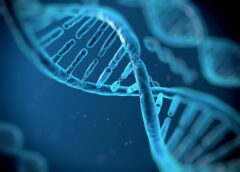Biomarkers allow doctors to detect kidney malfunction earlier, and have the potential to change how we test and treat diseases in the future.
By Vered Smith
Are biomarkers more truthful than crystal balls? Research demonstrates a new method using combined biomarkers that can predict which children in a Pediatric Intensive Care Unit are likely to develop acute kidney injury (AKI).
Like a kidney attack instead of a heart attack, AKI is when your kidneys abruptly stop working properly—ranging from a slight loss of function to complete failure. A serious condition that commonly occurs in children in PICUs, it results from other conditions that cause a restricted blood supply to the kidney.
At the moment, AKI is diagnosed by a high level of a molecule called creatinine in the blood. However, the level of creatinine takes a while to increase after the kidney is injured, so is detected once damage has already occurred—too late to prevent it happening.
RELATED: ONE MILLION VOLUNTEERS COULD ONE DAY REVOLUTIONIZE MEDICINE
Led by Dr. Rachel McGalliard and Dr. Steve McWilliam at the University of Liverpool, researchers have created a more accurate and early-detecting test for AKI. They used the level of a protein called Neutrophil Gelatinase-Associated Lipocalin (NGAL) measured in the urine, in combination with a calculation called the Renal Angina Index (RAI). The Renal Angina Index is a calculation that combines a lot of factors that increase the risk of a child getting AKI, to give a number that predicts how likely they are to get it. (These factors include if they’ve had stem cell or organ transplants, if they’re on a ventilator, and their creatinine level.)
The two tests together accurately predicted on the first day a child entered the Pediatric Intensive Care Unit if they would subsequently develop severe AKI. By identifying children who are at risk of contracting AKI, this can lead to earlier treatment, less kidney damage, and less long-term effects of AKI.
Biomarkers: Living off the benefits of early detection
In fact, the study also highlighted these long-term effects. Patients with severe AKI on average stayed in the Pediatric ICU twice as long as those without—6 days compared to 3. The mortality rate was also higher, with 8 percent of those with AKI dying compared to 2 percent of those without.
A new association found in this study was that AKI is also linked to a higher chance of getting hospital-acquired infections. Half the patients with severe AKI caught a hospital-acquired infection, whereas only a quarter of those without it caught one.
One of the main treatments for AKI is called renal replacement therapy (RRT), which usually includes kidney dialysis. Although more research is needed on the topic, previous studies have suggested that children survive better if they receive RRT earlier. Biomarkers that detect AKI more rapidly and sensitively could be used to identify children who would benefit from RRT, before they’ve reached a point of severe AKI.
This early detection is therefore potentially life-saving; allowing for preventative measures to be put in place, for personalized treatment to be planned, and for long-term effects to be lowered.
Biomarker-dly brilliant
In this research on AKI, the protein Neutrophil Gelatinase-Associated Lipocalin (NGAL) and the measurements taken as part of the Renal Angina Index (RAI) are biomarkers.
A biomarker is a biological mark of disease that can be objectively measured. In medicine, some symptoms are hard to quantitatively measure, such as a patient saying their headache is worse. But it is possible to measure the change in amount of a molecule in a sample of their blood. Tracking the levels of markers linked to specific diseases can help diagnose them and track their progress.
In routine checkups, screening for Down Syndrome of a fetus uses biomarkers. Two molecules in the mother’s blood are measured: pregnancy-associated plasma protein-A (PAPP-A) and free ß-human chorionic gonadotropin (free ß-hCG). A lower level of PAPP-A, in combination with a higher level of free ß-hCG indicate increased risk of a Down Syndrome pregnancy.
In tests called pharmacogenomic tests, biomarkers can also be used, this time to combine our knowledge of how a medicine works with our knowledge of genomics (the study of genes and their functions). One example is a drug (clopidogrel) that is given to prevent a patient getting blood clots or heart attacks. However, we know that different variations of a specific gene (CYP2C19) cause it to act in different ways. Once patients have been tested for their variation of this biomarker gene, doctors can then decide if, given the benefits and risks, this drug is a good option for that patient, or if it’s safer to use a different one.
It sounds like magic, but biomarkers are not flights of fancy or made-up dreams. This latest research using NGAL levels and the Renal Angina Index to anticipate AKI can be used in real hospitals to help real children, and make a real difference.
This study was published in the journal PLOS ONE.
References
Committee on Policy Issues in the Clinical Development and Use of Biomarkers for Molecularly Targeted Therapies; Board on Health Care Services; Institute of Medicine; & National Academies of Sciences, Engineering, and Medicine. (2016). Biomarker Tests for Molecularly Targeted Therapies: Key to Unlocking Precision Medicine (L. A. Graig, J. K. Phillips, & H. L. Moses, Eds.). National Academies Press (US). https://www.ncbi.nlm.nih.gov/books/NBK379329
McGalliard, R. J., McWilliam, S. J., Maguire, S., Jones, C. A., Jennings, R. J., Siner, S., Newland, P., Peak, M., Chesters, C., Jeffers, G., Broughton, C., McColl, L., Lane, S., Paulus, S., Cunliffe, N. A., Baines, P., & Carrol, E. D. (2020). Identifying critically ill children at high risk of acute kidney injury and renal replacement therapy. PLOS ONE, 15(10), e0240360. https://doi.org/10.1371/journal.pone.0240360
About the Author
Vered Smith comes from London, England, and is currently studying Medical Genetics in university there. Although she tries to avoid being a cliché, it can’t be denied that her favorite way to write is having a mug of tea (with milk, of course) in hand.

